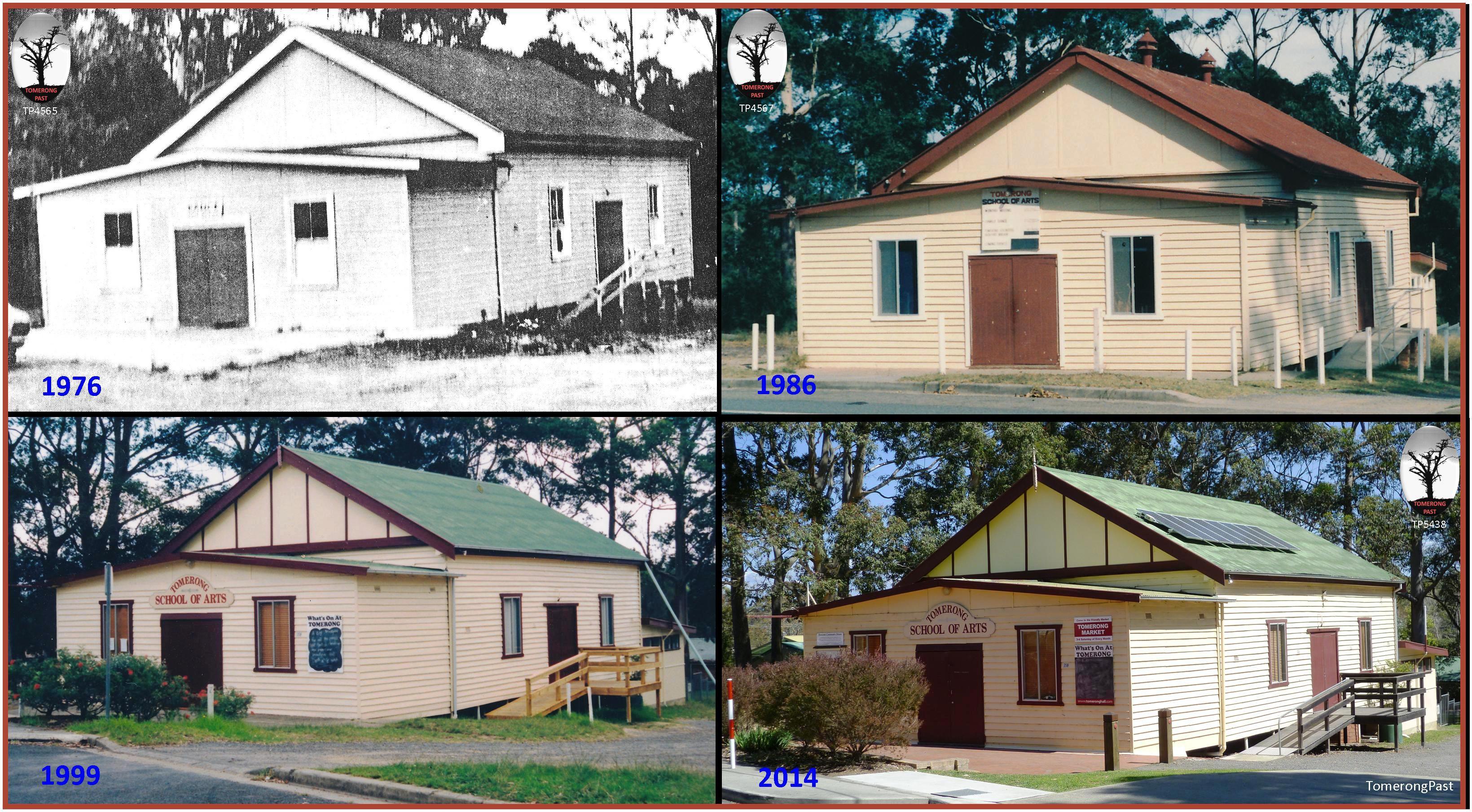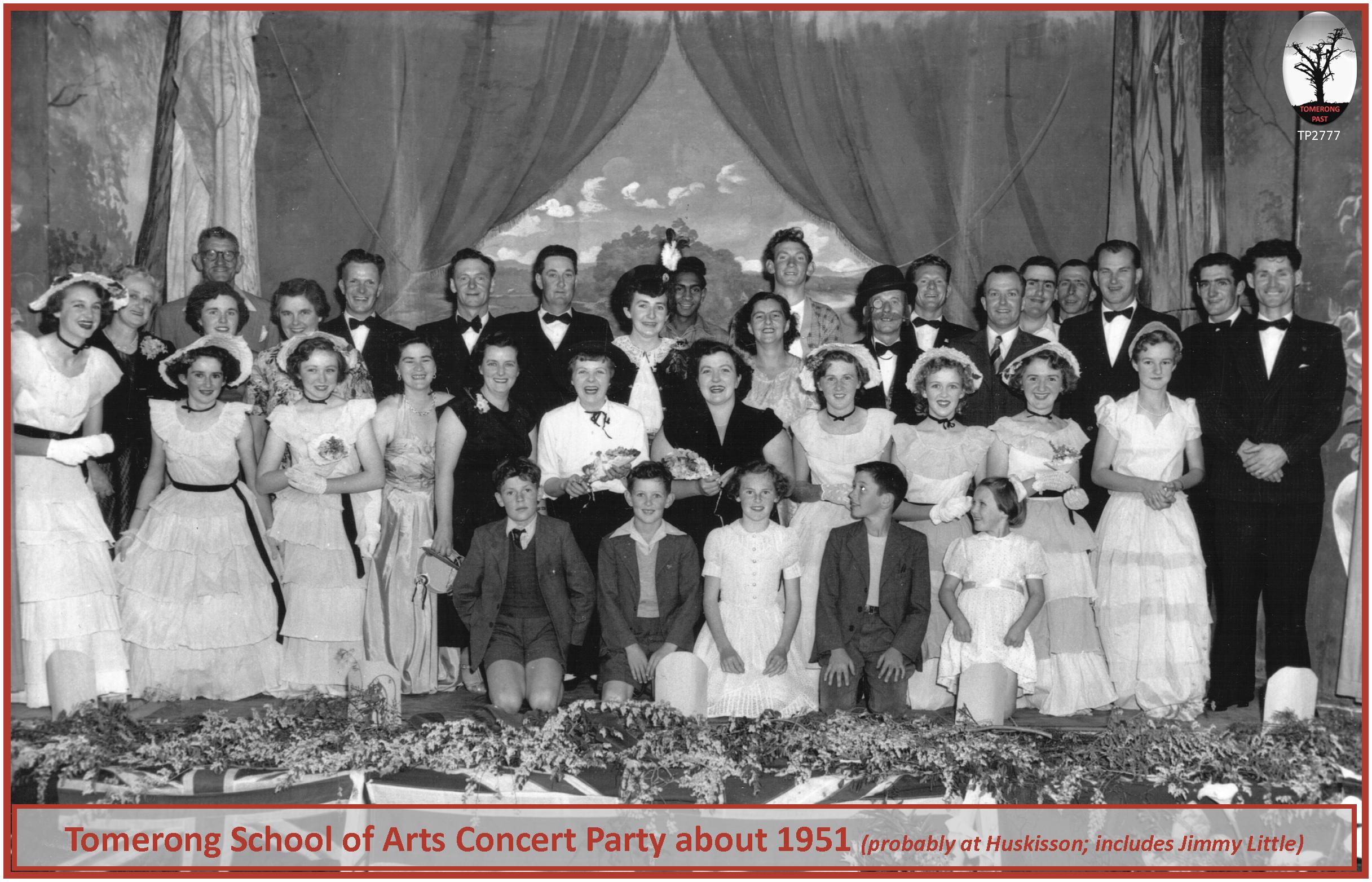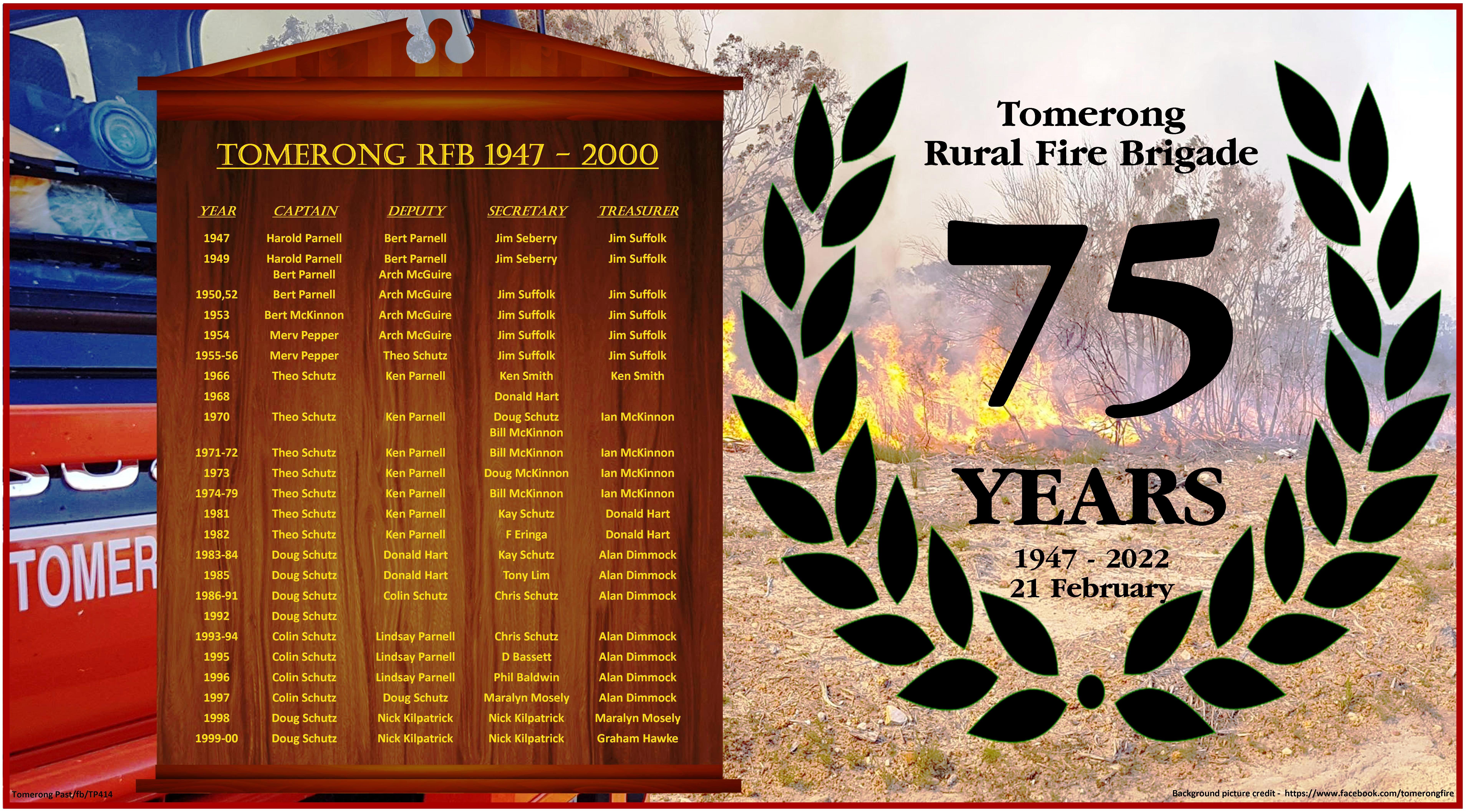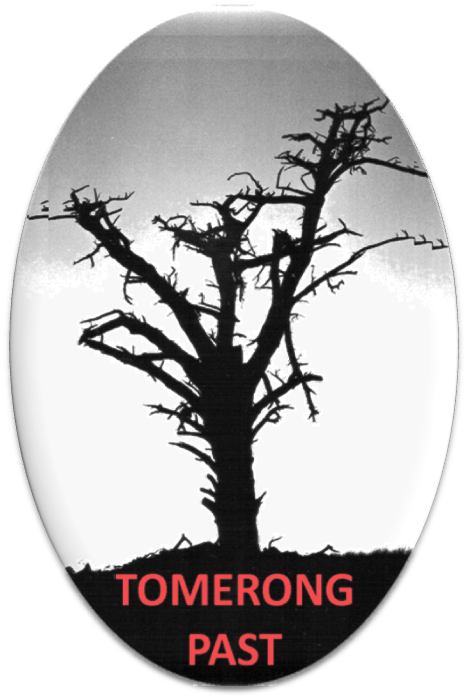FOR small isolated communities it was essential for them to provide their own education, entertainment and enlightenment. Whilst a Church could satisfy some, others looked to art and science to provide learning and understanding. Mechanics Institutes, Schools of Art and Fraternal organisations, such as the Odd Fellows Lodge, were established to fulfill this need. A Good Templars Lodge was formed at Tomerong in 1878, followed by a Literary & Debating Society in the early 1890s and a Progress Association in 1899. One of their first acts was to establish Tomerong Park at Pelican Point. It wasn't until 1926 that the long awaited School of Arts was constructed. A Junior Farmers Club was established in 1934 and a Red Cross Branch in the following year. The Bush Fire Brigade was established in 1947.
IN many towns and villages, Debating Societies were a prelude to the establishment of Literary Institutes or Schools of Art. These societies were popular among the local inhabitants and were formed in towns throughout the Shoalhaven. Financial support by subscription was necessary, but once established, these societies would pave the way for the provision of libraries, reading rooms and meeting halls. The Broughton Creek Literary and Debating Society was one of the first to commence in the Shoalhaven when it met at the local schoolhouse in 1866. Other societies were formed at Nowra, Milton, the Falls (Falls Creek) and Pyree.
The Tomerong Literary and Debating Society was formed in 1892 following a meeting held at the Church Hall on November 18. Mr John Ogilvie of the Milton Society chaired the meeting assisted by James McCallum of the Falls' Society. Ogilvie outlined details with regard to the proper management of the new Society. Officers elected were James Watt (Speaker), J Emery (Secretary\Treasurer), Thomas Langlands (Assistant Secretary), James Jones (Premier) and James Byron (Leader of the Opposition). Admission to the Society was by nomination with a fee of 1s per quarter, the first term ending on 31 March 1893. Ladies were permitted to become financial members, with the privilege of voting on all debatable subjects. The Premier was allowed 20 minutes for his opening speech and 15 minutes reply; the Leader of the Opposition was permitted a 20 minute opening address, with no right of reply. All ordinary members were allowed 10 minutes on the floor. Meetings were held in the Church Hall twice a month on the Friday before the full moon and the Friday after.
The first debate of the Society was held on 25 November and drew a crowded house including three new members. The subject of the first debate was 'Is it desirable to allow coloured labour into the colonies?' This referred to the influx of the Chinese and Kanakas. In 1854 Chinese immigration had numbered 4000, with the majority of these new settlers trying their luck in the gold fields. By 1857 their number had increased to more than 25,000. The arrival of so many into the colonies promoted fears of lower wages and a 'threat to material well being'. The Kanakas were brought to Australia by enforced recruitment (known as Blackbirding) to supply Queensland cotton and sugar plantation owners with cheap labour. They originated from Java, Ceylon and the Pacific Islands and although initial numbers were low, by 1895 50,000 had arrived in the colonies. The debate was opened with a determined argument in favour by Premier, James Jones, 'confining his remarks chiefly to the Chinese and the Kanakes in Queensland, as all being in greater or lesser degree beneficial to the colonies'. Short addresses were given by several other members and following the Premier's reply, an overwhelming majority of members voted in opposition. Following the debate the Premier resigned his position and was replaced by James Byron.
Later in the month a correspondent to the 'Shoalhaven Telegraph' commended the Tomerong community for the formation of the new Society. The article stated that 'The residents are to be complimented for the effort they have made in forming such a society, which undoubtedly will prove a boon to the community at large not only now but in future generations. The talent exists in the district and only requires cultivation'... (extract from Tomerong Local History)

Mechanic's Institutes and Schools of Art began to emerge in the mid 1800s. Their initial purpose was to provide education to the working classes, many of whom had received only limited schooling. Government bodies encouraged the introduction of Schools of Art and provided some financial support. Through the establishment of subscription libraries, the general populous could obtain access to literary works, including journals, novels and newspapers.
Milton was one of the earliest townships in the Shoalhaven to establish a School of Arts when it was opened in August 1872. Cambewarra followed suit four years later. In 1876 the 'Kiama Independent' reported that a School of Arts would be erected at Tomerong on a piece of land provided by James Barham. This building was, in fact, the Church Hall, built in 1877 and was used in the dual capacity of Church and Meeting Hall until the erection of the Tomerong Union Church in 1887. From this time the old Church building became known as the Tomerong Hall and was the venue for public gatherings including meetings, concerts and Sunday School.
The desire to commence a School of Arts library was first discussed by members of the Tomerong Literary and Debating Society in 1897. In October of that year the correspondent to the 'Shoalhaven Telegraph' reported that the greatest hurdle for the society in achieving its goal was the acquisition of a suitable building to house a library. The correspondent explained '…The present building is the property of the church trustees and although they give us the use of it as a hall they might not give us full control of it as a School of Arts, and unless they did the Government would give no subsidy'. It would appear that control of the Hall remained the responsibility of the Trustees and the library did not eventuate.
In the years to follow, Schools of Art were to change in their function. A report for the Minister for Education in 1912 determined that the original character of Schools of Art had altered completely; they were no longer education institutions, but rather circulating libraries with meeting rooms and in many cases, billiard rooms attached.
By 1920 the Tomerong Church Hall was in its 43rd year and was undoubtedly showing its age. The need for a larger building for the purpose of public gatherings was very evident and in August, the Clyde Shire Council approved plans for a School of Arts. However, building did not commence for a further six years.
Investigations into the establishment of a School of Arts was carried out by a Committee elected for that purpose and their findings were discussed at a public meeting held in March 1926. William Lackersteen, the Clyde Shire Clerk, chaired the meeting of 16 locals. Following lengthy discussions, a vote was conducted, and with a majority of two to one, it was decided to go ahead and build the Hall. A Committee was elected including James Watt II (President), William Lackersteen (Vice President), Horace Watt (Secretary) and George McGuire (Treasurer). A subscription list was opened and the Committee purchased block Number 8 of the Tomerong Subdivision, opposite the School residence, for the sum of £35. An application for the approval of plans for a building constructed of weather board with an iron roof was submitted to Clyde Council in the following month and was approved by the Engineer.
During the following months the first stages (foundations and floor) of the Hall were constructed by voluntary labour. James Muller was contracted to supervise any skilled work on the building. The dimensions of the hall were 40 ft by 30 ft. (12m x 9m) with a 12 ft stage that could be removed to permit more space for dancing. To provide lighting for evening functions it was decided to install the Gloria Lighting System, a gas burning system that was superior to the old kerosene lamps. The final cost of the building was approximately £300, with an extra £150 being spent on the purchase of a Pianola, water tank and other conveniences. Funds for the building had been accumulating over a number of years and three residents James Watt II, Horace Watt and George McGuire generously provided the shortfall. The first trustees to be appointed were James Watt, George McGuire and William Lackersteen. The Tomerong School of Arts rulebook, printed in the previous year, outlined the object of the Institution as 'the intellectual improvement of its members and the cultivation of Literature, Science and Art'. Annual membership fees were set at 5s for gents and 2s 6d for ladies. A donation of £10 10s by any person to the institution, constituted life membership.
It was hoped to have the new Hall ready for its official opening on the 10 September 1926; however, this could not be achieved and a new date 15 October was selected. Arrangements were made for a concert to mark the special occasion. Admission fees were set down at 2s for gentlemen, 1s for ladies, children between the ages of ten and fourteen years paid 6d and children under the age of ten gained free admission.
William Watt (President of the Clyde Shire) hosted the official opening... (extract from Tomerong Local History)

The destructive power of fire, given the right conditions, can do tremendous damage in a very short time. This was the case in October 1867 when the home of Mathew Hart was destroyed just north of Tomerong. The correspondent to the 'Kiama Independent' reports 'On Thursday last we were visited by a perfect hurricane, trees and limbs falling in every direction, playing havoc with fencing within reach. During its fury great damage was done by fire at Tomerong. It appears there was some rubbish set fire to by some of Mr Mathew Hart's family. Although a great distance from the homestead, the violence of the wind carried sparks to some neighbouring trees, and such was the rapidity with which the fiery element travelled, that it reached the premises and totally destroyed the dwelling house and everything in it… Young Hart, in trying to save the house, got his arm burnt. Messrs. Shepherd, Barham, and Parnell are great sufferers from the fire, losing their barns, huts, and fencing: But I am happy to say no casualty to life occurred in that direction.'
In the well-timbered area of Tomerong the danger of bush fires has always been present. Outbreaks of large bush fires almost always coincide with extended periods of dry weather or droughts. In January 1884, a fire swept through the village causing much damage along the way. A correspondent to the 'Shoalhaven Telegraph' reported that '...the whole township was in a cloud of smoke. Mr John Parnell has lost between two hundred and three hundred rod of fencing, and Mr George Smith nearly lost his dwelling house and outhouses; in fact, but for the energy of some kind-hearted neighbours and his own activity, he would have lost all. Mr Hart's and Mr Feeman's places were also in great danger; and Mr John Stapleton's place, I hear, had a narrow escape, as the sleepers of the house were on fire.'
The devastation of bush fires was all too apparent ten years later when another fire swept through the district, completely engulfing the home of Mr and Mrs Edward Pepper who lived about a mile off the main road. Edward was away seeking work at Jervis Bay and Mrs Pepper and her five children watched as their home and all the family's belongings burnt to the ground. It was reported that the fire left the family almost destitute.
A major blaze was reported to be burning between Tomerong and Jervis Bay in December 1900 and twelve months later fires were again said to be raging all around. The district was badly in need of rain at this time and New South Wales was experiencing one of its most severe droughts.
Major losses of property for many residents at Tomerong and St Georges Basin occurred on 'Black Sunday' in January 1909. It was described as one of the worst days experienced for years with the temperature reaching 110 degrees (43°C) with bush fires blazing in all directions. The 'Shoalhaven Telegraph' reported that '...Mr F Hart had his house and outbuildings burnt to the ground. Mr James Bryce lost everything but his house. It was thought at one time that Mr G Ganderton would have lost everything. Much damage is done to the grass and fencing in the district.'
Although bush fires were reported at Turpentine and Falls Creek in 1919, it wasn't until 1929 when, in the grip of another dry period, Tomerong and Wandandian suffered major damage from fires. James Watt lost about five miles of fencing in the blaze. To assist those who had suffered 'hardship and distress' in the fires, the Clyde Council offered work to those most in need.
Ken McGuire remembers when he was still attending school, before WWII, a large fire was burning at Turpentine '…the burnt leaves were travelling from up at Turpentine which is about 15 miles away, the leaves were burnt, but they were still landing on our ground outside. The birds dropped dead out of the trees, it was as still as still, like when there's a disaster and everything goes dead still, we were out in the paddock and everything was sort of aglow up in the sky, it was dark inside the house, it was frightening.'
The massive destruction of wild fire was experienced in Victoria, South Australia and New South Wales in January 1939 with many lives lost in Victoria. After bush fires wiped out the township of Yalwal in the same year, Nowra Municipal Council decided that local bush fire Brigades should be formed to counter the potential threat of bushfires to the town. In the following year the first local Brigade was formed and was based in Illaroo Road. The State Bush Fire Advisory Council made recommendations to local Councils but the advice was largely ineffectual without a local authority to implement directives. In 1939, when the Clyde Shire was asked by the Advisory Council how they planned to deal with future fire outbreaks their response was to purchase beaters for the maintenance men. At that time Mr J F Rolfe advised the Clyde Council that he was willing to assist in forming a Bush Fire Brigade at Tomerong to which they readily agreed. Although a Brigade was formed in 1939 with its headquarters based at the Clyde Shire office, it does not appear to have been active. With the departure of Mr Rolfe it was left to the Council maintenance men, once again, to react to any outbreaks.
In 1942 the Bush Fire Emergency Committee were urging the establishment of Brigades at Huskisson, Jervis Bay, Sassafras, Sussex Inlet, Termeil, Tomerong and Wandandian... (extract from Tomerong Local History)

Back to Top See the More Information page for additional information. The Next Page covers the Dateline.



